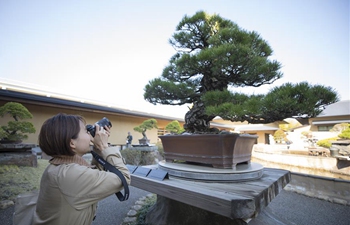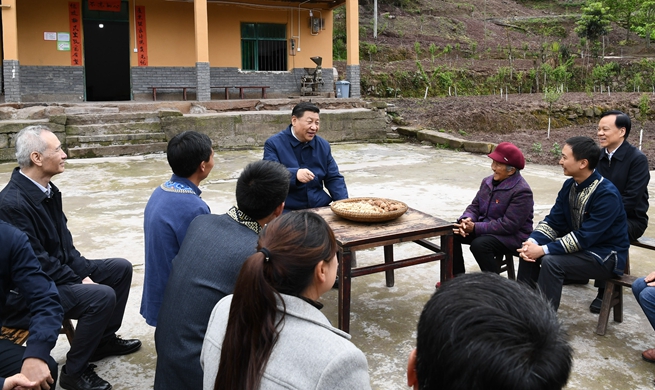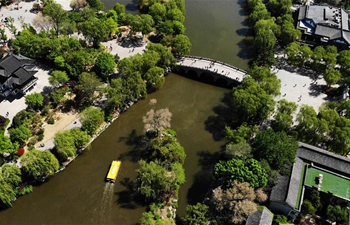BEIJING, April 16 (Xinhua) -- Chinese researchers have used a new tissue engineering method to build artificial meniscus that better mimic native ones.
The meniscus is a fibrocartilage structure within the knee joint that helps reduce friction during joint movement. Once damaged, it may increase the risk of osteoarthritis, and the meniscus has a limited ability to heal itself.
Currently used artificial materials for meniscal tissue repair have limitations as they can not construct the native meniscus' anisotropic structure with different properties from the inner to the outer zone. Therefore, joint degeneration may occur after implantation.
Researchers from the Peking University Third Hospital, Beihang University and other institutes have developed a new tissue engineering method to construct meniscus with the native anisotropic structure.
They used a biomimetic 3D printed poly-seeded scaffold with mesenchymal stem cells and applied biomechanical stimulation and growth factor treatment to generate tissues that mimic the native knee meniscus.
The engineered meniscus demonstrated cartilage protection when implanted into the knees of rabbits.
According to Jiang Dong, one of the researchers, the structure and mechanical strength of the meniscus they constructed are very close to native ones, which will effectively prevent the articular cartilage degeneration.
"It is interdisciplinary research that combines medical science and engineering and has a good perspective in future clinical application for patients with meniscus injuries," Jiang said.
The research was published in the journal Science Translational Medicine.

















